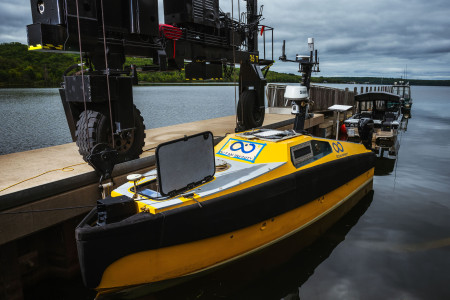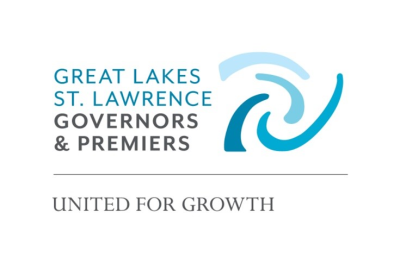Unmanned Vessel Launched Into Lake Superior to Find Plane Wreck

HOUGHTON, Mich., September 9, 2024 (Newswire.com) - Today at the Great Lakes Research Center at Michigan Technological University, more than 50 members of the Great Lakes Smart Ships Coalition gathered to witness the pioneering deployment of an autonomous surface vessel (ASV) that will conduct large-scale mapping and archaeological exploration in Lake Superior in hopes of finding the wreckage of a 1968 plane crash.
Following formal remarks at the event, guests watched the ASV be lowered into the water at the Great Lakes Research Center as the A8 set sail. A livestream from the vessel will air throughout the weeklong endeavor. The public can view it here: https://www.youtube.com/channel/UC9ru4SHsO7VHYNgQ5HNwyvg
Zoom recording of formal remarks: https://drive.google.com/file/d/1cG95VwjFGSDOVW7RSQAoJGeivaFPzylQ/view?usp=drive_link
Link to event and vehicle video/photos: https://drive.google.com/drive/folders/16E8iHBnnVx5_5RwUAzThc7VuavNEBQzP?usp=sharing
Link to daily live YouTube video updates from project team: https://www.youtube.com/watch?v=4SakgkrXD7U
Using Ocean Infinity’s Armada 8 (A8), an 8-meter state-of-the-art autonomous surface vessel (ASV) outfitted with an ultra-high-resolution 3D bathymetric sonar system, crews will map and explore Lake Superior in search of the wreckage of a National Center for Atmospheric Research (NCAR) plane that disappeared over the lake, sparking a decades-long mystery. On a routine mission to collect water radiation and temperature data, the plane vanished after its last contact with the Houghton County Memorial Airport.
“This project is the first of a series of planned tests showcasing the diverse applications of autonomous technology in the Great Lakes,” said David Naftzger, executive director of Great Lakes St. Lawrence Governors & Premiers, one of the organization’s leading the Smart Ship effort. “Beyond solving specific challenges and enhancing existing techniques, these tests will contribute to developing the next generation of maritime professionals and solidifying the Great Lakes St. Lawrence region’s status as a hub for freshwater marine autonomy research and development. We hope that by demonstrating the benefits of autonomy in large-scale lakebed surveying, the Coalition will foster broad stakeholder support for future missions and ignite an interest in high-tech exploration and preservation of the Great Lakes.”
“Michigan Tech’s Great Lakes Research Center is proud to bring together partners — Ocean Infinity, Norbit, Kongsberg, and the State of Michigan, and others — to execute a mission to find the NCAR Queen Air that crashed in Lake Superior in 1968,” said Timothy Havens, Ph.D., director of the Great Lakes Research Center at Michigan Technological University. “This mission represents the future of marine and Great Lakes technology, where autonomous vessels allow us to explore, map, and measure our lakes and oceans in ways previously unachievable. The era of Smart Ships is here, and Michigan Tech is proud to be a nexus of autonomous marine technology. This mission demonstrates the strength in Michigan Tech’s students, faculty, and researchers in developing and applying cutting-edge technology to create a better future for the Great Lakes region and beyond.”
Source: Great Lakes Smart Ships Coalition
